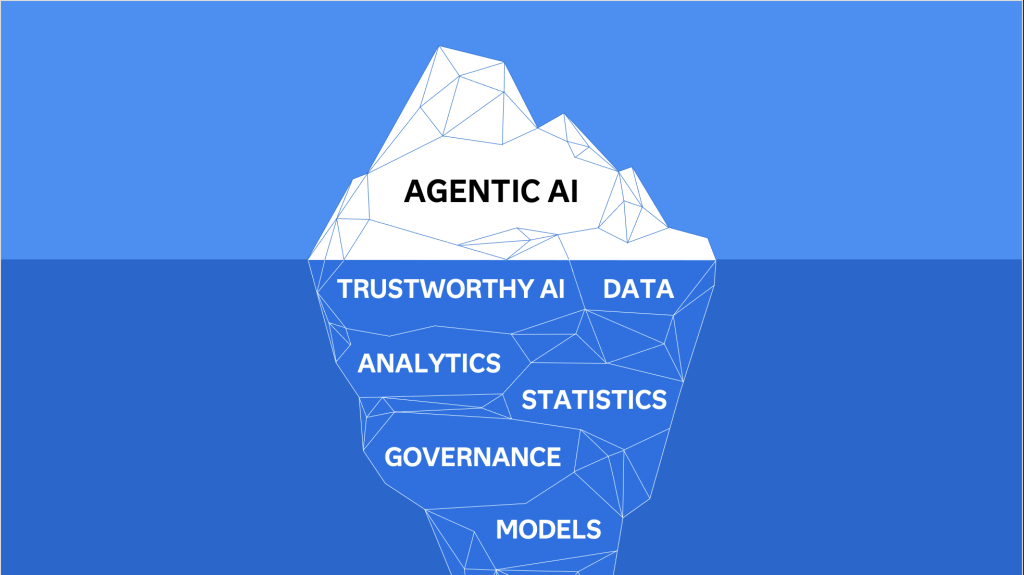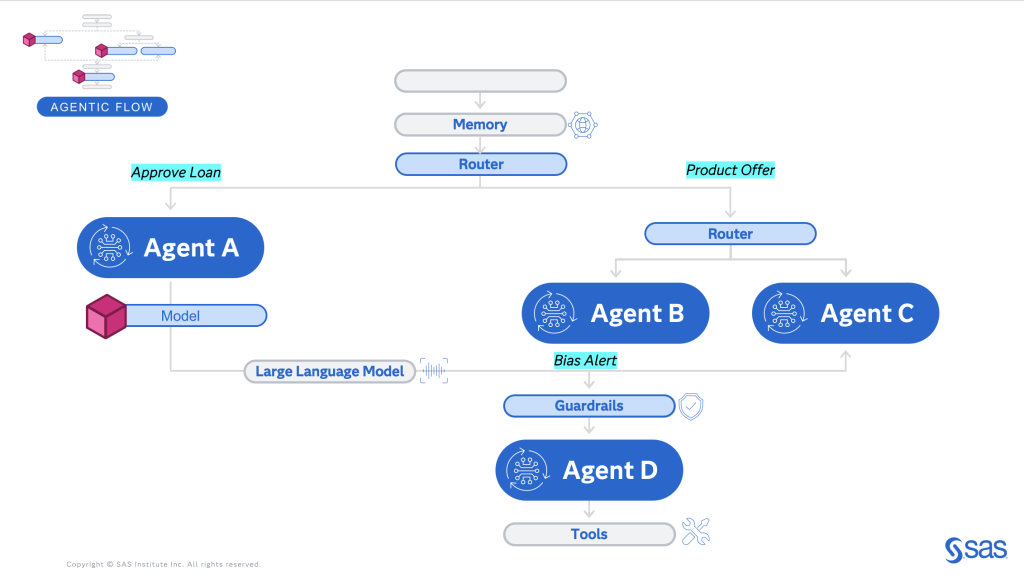Call it what you want – an arms race, a land grab, a gold rush – but AI is now the centerpiece of most business strategies.
Executives aren’t just curious about AI anymore; they are positioning their organizations for the technology’s future. The problem? Most organizations aren’t ready.
Even as interest in generative AI (GenAI) and autonomous systems explodes, only a few organizations are building the foundations to scale AI responsibly. The rest are rushing in without a plan, missing the infrastructure, governance and cross-functional collaboration to make AI work in the real world.
The answer lies in building on the existing infrastructure, applying AI thoughtfully across people, processes and technology and strategically using tools like SAS® Viya® to solidify that foundation.
Let’s explore what distinguishes AI leaders from laggards, why agentic AI marks the next significant shift and how SAS technology is helping organizations take a more innovative, structured approach.
The AI gold rush
We are witnessing an AI gold rush, with organizations eager to tap into AI’s potential. While many are excited about what AI can offer, few have the right approach to make the most of it. The rush is on, but only a few are laying the foundation to unlock new levels of productivity and value.
The growing AI leadership divide
Expectations for AI are incredibly high. Stakeholders expect dramatic ROI and transformative results, often viewing AI as a shortcut to a business revolution. However, the reality is much more complex.
Recent findings from our GenAI study revealed that only 16% of survey respondents were considered AI leaders – those who approach AI strategically, integrating governance, transparency and trust from the outset. However, almost half of the respondents were observers scrambling in the AI rush.

This highlights the need for more organizations to adopt strategic AI approaches.
Blueprint for AI success
To scale AI effectively, leaders must have a blueprint. This blueprint ensures that all components of the AI journey – data, models, teams and governance – work together seamlessly. A well-defined strategy that prioritizes productivity, performance and trust is critical.
Building this blueprint means fostering collaboration among data scientists, engineers, business analysts and business leaders throughout the data and AI lifecycle. This collaborative approach drives experimentation and innovation and ensures that AI solutions are tailored to the organization’s specific needs while promoting trustworthy AI practices.
Adding agentic AI becomes a natural next step for organizations with a strong foundation in data engineering, analytics, and AI modeling. SAS Viya is designed to support this transition, offering tools that help organizations build scalable, ethical and transparent AI systems.
Reaching the next peak: Agentic AI
Agentic AI represents the next frontier in AI evolution. Unlike traditional machine learning models, which passively process data, agentic AI actively engages with users, driving outcomes and improving efficiency across various processes. Organizations are eager to reach this new peak.

Consider a loan approval system powered by agentic AI: an AI agent doesn’t just evaluate credit scores. It explains the decision-making process, generates summaries and guides users through every application step, making the process more efficient and accessible.
But like traditional AI, agentic AI requires a solid foundation. Without it, AI agents may fail to live up to their potential. To reach this new peak, you need a holistic strategy encompassing people, processes and technology, which SAS Viya is uniquely equipped to support.
SAS Viya excels at helping organizations build AI agents that can tackle complex tasks, make decisions and interact with users in ways that improve outcomes.
Here’s a closer look at the many agents at work during a loan application:
- A loan approval agent uses large language models (LLMs) to determine the probability of default and generate a summary.
- A bias detection agent raises alerts if it detects any bias in the approval process.
- A product offer agent suggests the next best financial product, such as a loan or credit card.

These agents seamlessly work together, using existing data and models to improve decision-making processes. SAS Viya’s ability to combine probabilistic and deterministic approaches means organizations can trust these systems to deliver accurate, transparent and explainable outcomes.
People, process and technology: The pillars of AI success
I’ve spoken briefly on people, process and technology, but organizations must get this right.
Here’s why:
- People: Strong leadership and skilled teams are essential for driving AI success. This includes everyone who understands how to apply AI to solve business problems. Governance is key in enabling AI systems to be responsible and accountable.
- Process: Successful AI adoption is rooted in a well-defined process that ensures smooth change management, model evaluation, and continuous improvement. Organizations can streamline processes using agile methodologies and AI lifecycle management tools like SAS® Workflow Manager and ensure ongoing optimization.
- Technology: Reliable and scalable technology is the backbone of AI success. From high-quality data governance to AI model deployment and monitoring, having the right technology in place is critical for scaling AI operations and ensuring consistency.

SAS Viya makes it easier for organizations to build on their existing infrastructure, enhancing it with advanced AI capabilities that seamlessly integrate into workflows. This makes AI not just a tool but a true enabler of business transformation.
The importance of trustworthy AI
As organizations move deeper into the world of agentic AI, ensuring that these systems remain trustworthy becomes even more critical. Trustworthy AI means AI systems are transparent, explainable and fair in their decision-making processes.
SAS Viya offers several tools to ensure AI models meet these standards, including model interpretability, automated fairness assessments and the ability to generate model cards that track performance over time. These capabilities ensure that AI systems are effective but also ethical and accountable.
SAS Viya also offers decision path tracking in SAS® Intelligent Decisioning, which gives visibility into how each iteration of an agentic workflow moves through each decision point.
By aligning AI development with a robust governance framework, organizations can ensure that AI models operate within predefined ethical guidelines, safeguarding against bias and privacy violations.
Navigating the future of AI
To succeed with AI, businesses must understand the complex infrastructure underpinning it. While AI’s visible “peak” may be alluring, the real value lies beneath the surface in the foundational systems that support it.
